.
19.11.2014
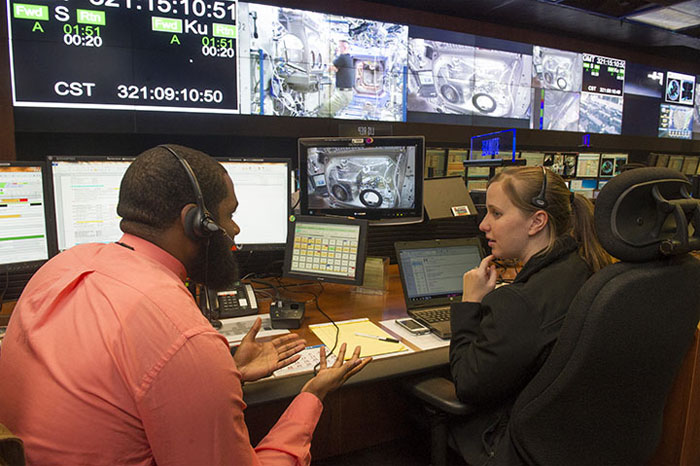
Darian Bryant, left, and Melissa Hopper, stowage engineers with the Payload Operations Integration Center at NASA's Marshall Space Flight Center in Huntsville, Alabama, work with NASA astronaut Barry "Butch" Wilmore to calibrate the first 3-D Printer flown on the International Space Station.
.
Today, NASA took a big step toward changing the way we plan for long-duration space voyages when astronaut Barry “Butch” Wilmore successfully installed and prepared the first 3-D printer for upcoming manufacturing operations on the International Space Station.
"This printer is a critical first step for in-space manufacturing," said Jason Crusan, director of NASA's Advanced Exploration Systems Division at NASA Headquarters in Washington. "Additive manufacturing with 3-D printers will allow space crews to be less reliant on supply missions from Earth and lead to sustainable, self-reliant exploration missions where resupply is difficult and costly. The space station provides the optimal place to perfect this technology in microgravity."
Wilmore installed the printer in the station’s Microgravity Science Glovebox and started the printer, which extruded plastic to form the first of a series of calibration coupons, a small plastic sample about the size of a postage stamp. After calibration of the printer is complete and verified, the printer will make the first NASA-designed 3-D printed object in space. The goal of the 3-D Printing in Zero-G Technology Demonstration on the space station is to show that additive manufacturing can make a variety of parts and tools in space. The 3-D printer heats a relatively low-temperature plastic filament to build parts layer on top of layer in designs supplied to the machine.
Before the printer left Earth in September 2014 on SpaceX’s fourth commercial cargo resupply mission, engineers loaded the first files to be printed. These initial parts -- primarily test coupons -- will be returned to Earth for detailed analysis and comparison to identical ground control samples made earlier this year prior to launch with the same printer while it was at NASA’s Marshall Space Flight Center in Huntsville, Alabama.
"The goal of the first phase of printing is to verify that the 3-D printing process works the same in microgravity as it does on the ground," said Niki Werkheiser, NASA's 3-D printer project manager at Marshall. "Once we confirm that the process works, we will move to the second phase of printing which focuses more on the design and utilization of the parts we print, which will ultimately lead to establishing an on-demand machine shop in space."
.
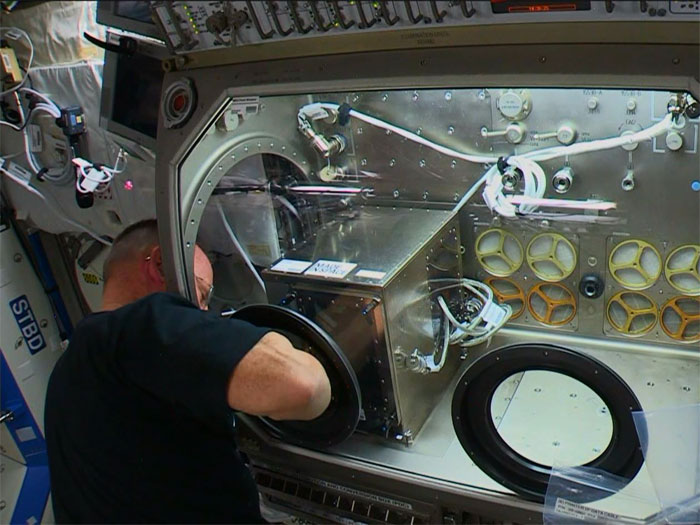
NASA astronaut Butch Wilmore installs a 3-D Printer in the Microgravity Science Glovebox on the International Space Station.
.
NASA contracted Made In Space, Inc. at NASA’s Ames Research Center in Moffett Field, California, to design and build the printer. Going forward, Made In Space engineers will use NASA-provided software and work with controllers at NASA’s Payload Operations Integration Center (POIC) in Huntsville to send commands directly to the printer from the ground. As the first objects are printed, NASA and Made In Space engineers will monitor printing via downlinked images and videos. The majority of the printing process is controlled from the ground to limit crew time required for operations.
"We’re approaching the most exciting moment of this experiment after years of intensive work, which dates back to Made In Space's first microgravity testing with NASA's Flight Opportunities Program in 2011," said Aaron Kemmer, CEO of Made In Space, Inc. “Our team is on standby to send the command to print the first object in space. We are taking everything we are learning on the space station and using it to design an even more elaborate 3-D printer, which will be available for anyone to use.”
That printer is scheduled to be launched to the station next year and will be available to meet manufacturing needs of both NASA and commercial users.
NASA invited students to propose what they would print in space as part of a Future Engineers competition. Students can create and submit a digital 3-D model of a tool they think astronauts need in space. The winning student will watch from the POIC alongside the operations control team as their design is printed in space. The deadline for entry is Dec. 15.
.
Frams: NASA-Video

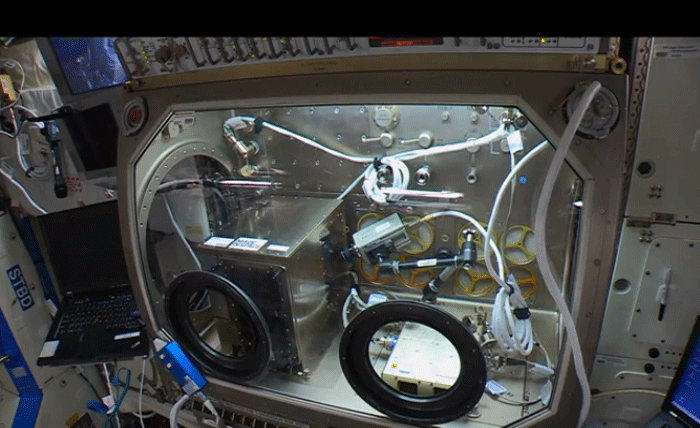
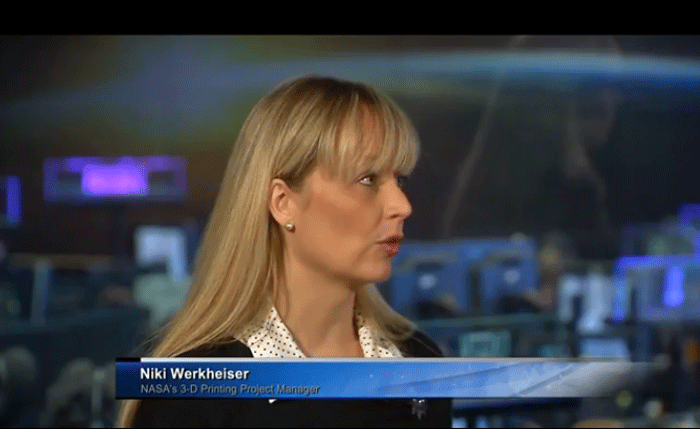
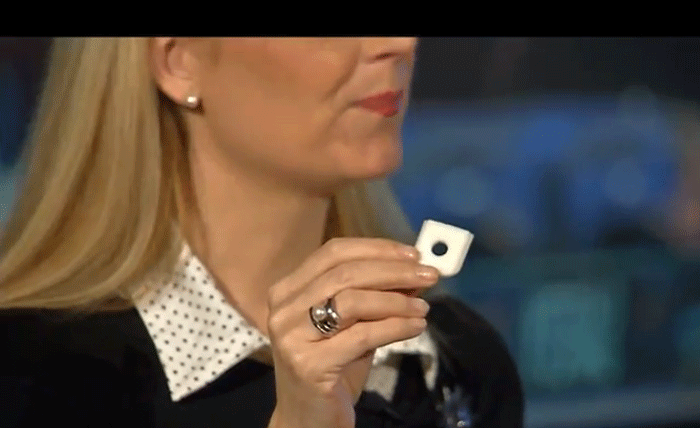
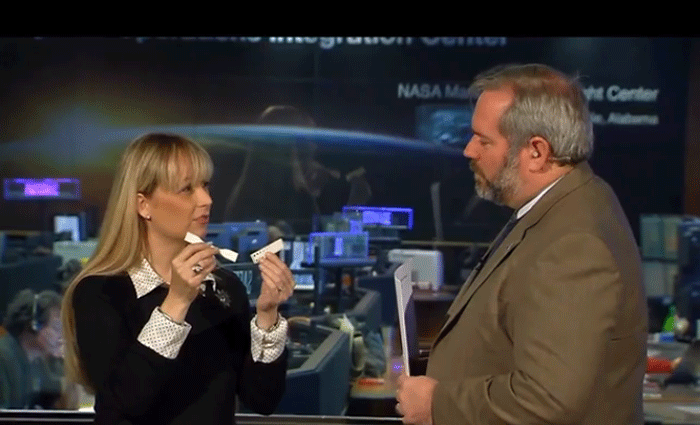
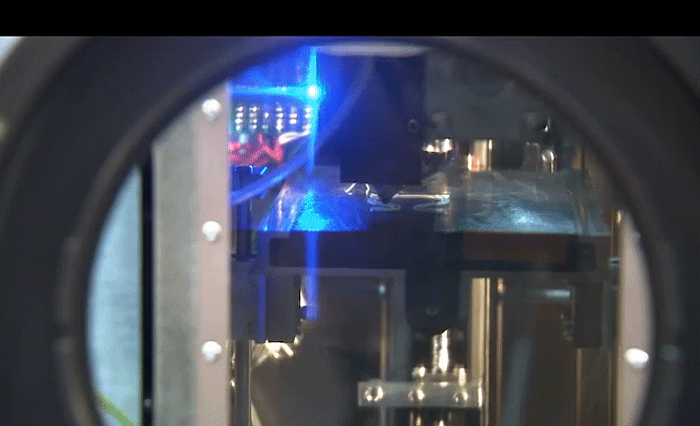
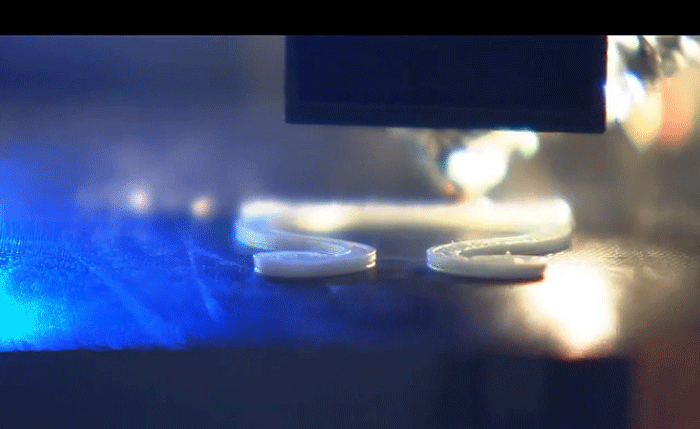
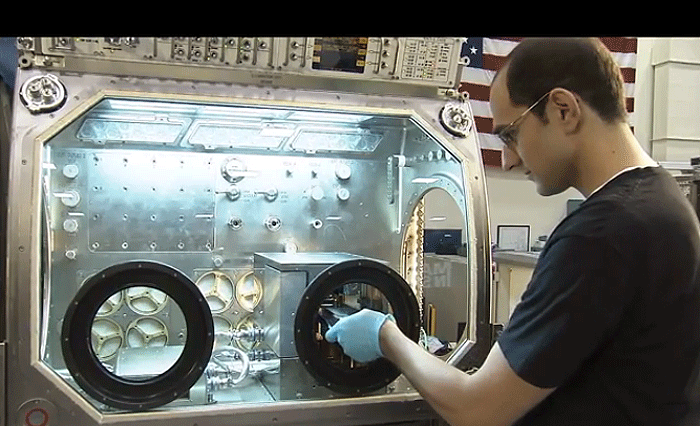
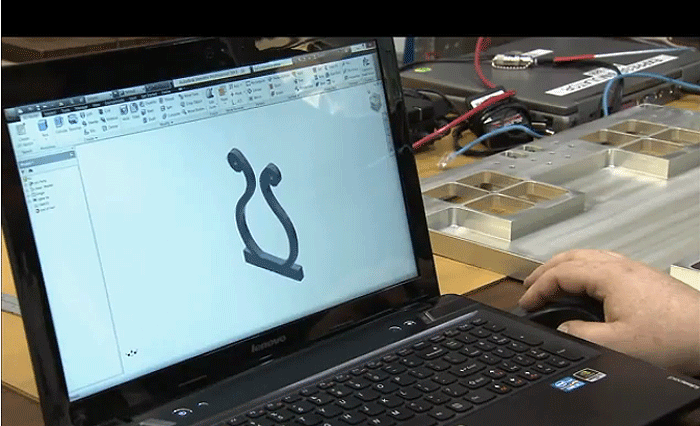

Quelle: NASA
.
Update: 26.11.2014
.
Open for Business: 3-D Printer Creates First Object in Space on International Space Station
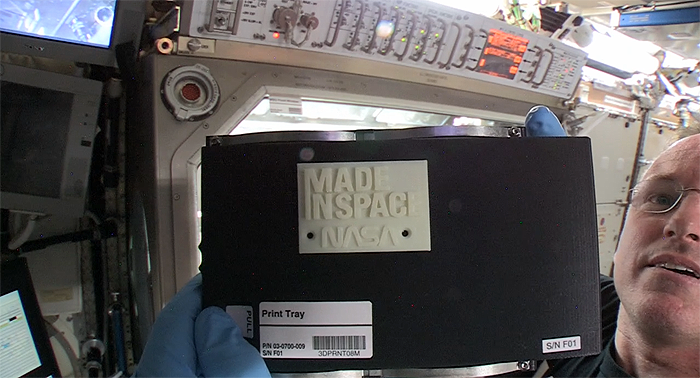
International Space Station Commander Barry “Butch” Wilmore holds up the first object made in space with additive manufacturing or 3-D printing. Wilmore installed the printer on Nov. 17, 2014, and helped crews on the ground with the first print on Nov. 25, 2014.
Image Credit: NASA
.
The International Space Station’s 3-D printer has manufactured the first 3-D printed object in space, paving the way to future long-term space expeditions.
"This first print is the initial step toward providing an on-demand machine shop capability away from Earth," said Niki Werkheiser, project manager for the International Space Station 3-D Printer at NASA's Marshall Space Flight Center in Huntsville, Alabama. "The space station is the only laboratory where we can fully test this technology in space.”
NASA astronaut Barry "Butch" Wilmore, Expedition 42 commander aboard the International Space Station, installed the printer on Nov. 17 and conducted the first calibration test print. Based on the test print results, the ground control team sent commands to realign the printer and printed a second calibration test on Nov. 20. These tests verified that the printer was ready for manufacturing operations. On Nov. 24, ground controllers sent the printer the command to make the first printed part: a faceplate of the extruder’s casing. This demonstrated that the printer can make replacement parts for itself. The 3-D printer uses a process formally known as additive manufacturing to heat a relatively low-temperature plastic filament and extrude it one layer at a time to build the part defined in the design file sent to the machine.
On the morning of Nov. 25, Wilmore removed the part from the printer and inspected it. Part adhesion on the tray was stronger than anticipated, which could mean layer bonding is different in microgravity, a question the team will investigate as future parts are printed. Wilmore installed a new print tray, and the ground team sent a command to fine-tune the printer alignment and printed a third calibration coupon. When Wilmore removes the calibration coupon, the ground team will be able to command the printer to make a second object. The ground team makes precise adjustments before every print, and the results from this first print are contributing to a better understanding about the parameters to use when 3-D printing on the space station.
“This is the first time we’ve ever used a 3-D printer in space, and we are learning, even from these initial operations,” Werkheiser said. “As we print more parts we’ll be able to learn whether some of the effects we are seeing are caused by microgravity or just part of the normal fine-tuning process for printing. When we get the parts back on Earth, we’ll be able to do a more detailed analysis to find out how they compare to parts printed on Earth.”
The 3-D Printing in Zero-G Technology Demonstration on the space station aims to show additive manufacturing can make a variety of 3-D printed parts and tools in space. The first object 3-D printed in space, the printhead faceplate, is engraved with names of the organizations that collaborated on this space station technology demonstration: NASA and Made In Space, Inc., the space manufacturing company that worked with NASA to design, build and test the 3-D printer. Made In Space is located on the campus of NASA’s Ames Research Center in Moffett Field, California.
“We chose this part to print first because, after all, if we are going to have 3-D printers make spare and replacement parts for critical items in space, we have to be able to make spare parts for the printers,” Werkheiser said. “If a printer is critical for explorers, it must be capable of replicating its own parts, so that it can keep working during longer journeys to places like Mars or an asteroid. Ultimately, one day, a printer may even be able to print another printer.”
Made In Space engineers commanded the printer to make the first object while working with controllers at NASA’s Payload Operations Integration Center in Huntsville. As the first objects are printed, NASA and Made In Space engineers are monitoring the manufacturing via downlinked images and videos. The majority of the printing process is controlled from the ground to limit crew time required for operations.
"The operation of the 3-D printer is a transformative moment in space development," said Aaron Kemmer, chief executive officer of Made In Space. "We’ve built a machine that will provide us with research data needed to develop future 3-D printers for the International Space Station and beyond, revolutionizing space manufacturing. This may change how we approach getting replacement tools and parts to the space station crew, allowing them to be less reliant on supply missions from Earth."
The first objects built in space will be returned to Earth in 2015 for detailed analysis and comparison to identical ground control samples made on the flight printer after final flight testing earlier this year at, NASA’s Marshall Center prior to launch. The goal of this analysis is to verify that the 3-D printing process works the same in microgravity as it does on Earth.
Quelle: NASA
4361 Views
